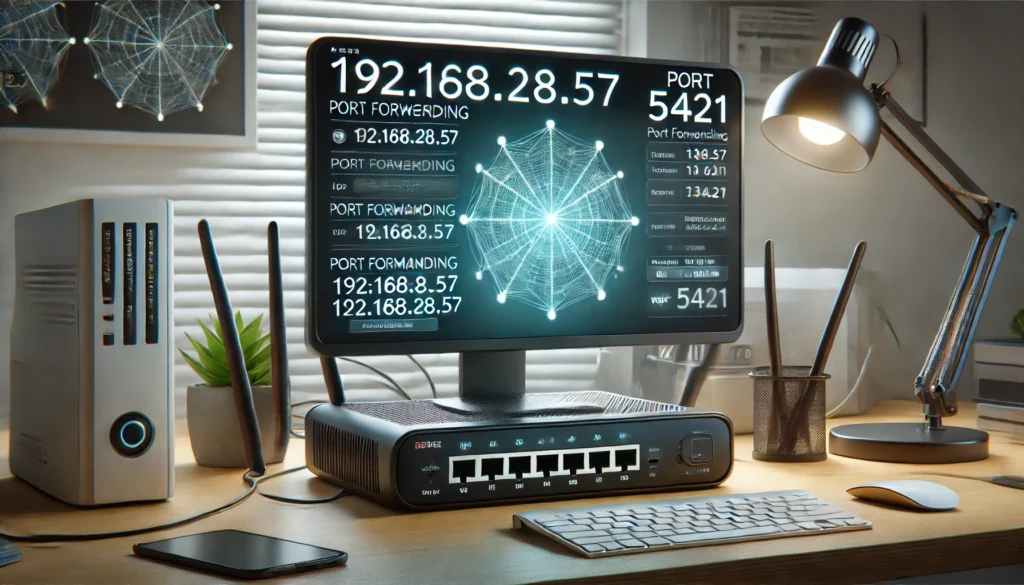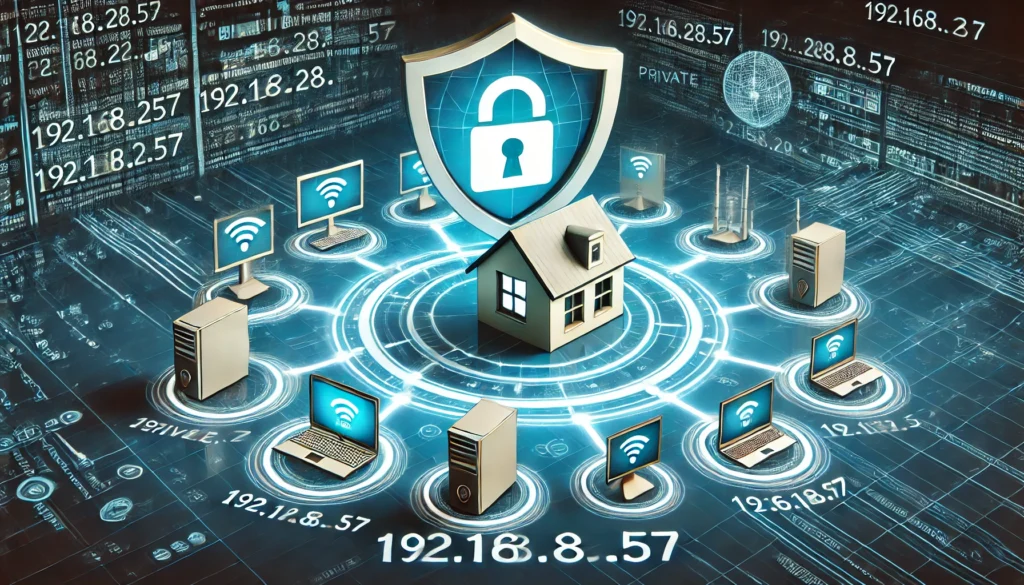Mastering 192.168.28.57:5421 – The Ultimate Guide to IP Addresses and Ports

Introduction to 192.168.28.57:5421
The combination of 192.168.28.57:5421 represents a private IP address paired with a specific port number. This duo serves as a cornerstone in local network configurations, enabling seamless communication between devices. Whether you’re a networking enthusiast or a professional IT administrator, understanding the principles and applications of this address-port pairing is vital for creating secure and efficient networks. In this guide, we’ll dive into the details of 192.168.28.57:5421, covering everything from setup to advanced security practices.
Breaking Down the Components
What is an IP Address?
An IP address (Internet Protocol address) is a unique identifier assigned to devices in a network, enabling them to send and receive data. There are two main types of IP addresses:
- Public IP Addresses: Used to identify devices on the internet.
- Private IP Addresses: Used for communication within private networks.
The address 192.168.28.57 belongs to the private IP range defined by the Internet Assigned Numbers Authority (IANA). It is commonly utilized in homes and small offices for internal communication.
Understanding Port Numbers
Ports act as gateways that direct data to specific applications or services within a device. Each port is associated with a number, such as 5421, which identifies the destination service. Combining an IP address with a port number creates a unique endpoint for communication.
Applications of 192.168.28.57:5421
The pairing of 192.168.28.57 with port 5421 is often used in the following scenarios:
- Hosting Local Services: Such as file sharing servers, database applications, or web servers accessible within the local network.
- IoT Devices: Smart devices frequently rely on such configurations for internal control and communication.
- Network Gaming: Multiplayer games within the same network use similar setups to establish connections.
- Media Streaming: Internal media servers can use this configuration to stream content to local devices.
How to Configure 192.168.28.57:5421
Configuring 192.168.28.57:5421 involves several steps. Follow this guide to ensure a smooth setup:
Step 1: Assign a Static IP
- Log in to your router settings through its web interface (usually accessible via 192.168.0.1 or 192.168.1.1).
- Navigate to the DHCP settings and reserve 192.168.28.57 for your device.
Step 2: Port Forwarding
- Go to the Port Forwarding section in your router.
- Create a new rule:
- IP Address: 192.168.28.57
- Port: 5421
- Protocol: TCP/UDP (depending on the application).
- Save the configuration and restart your router if necessary.
Verifying the Configuration
Use tools like Ping or Port Checker to confirm that the IP and port are properly configured and accessible within your network.
Security Best Practices
While 192.168.28.57:5421 is a private IP-port combination, internal threats still exist. Here are some security measures to protect your setup:
- Enable Firewalls: Both on your router and devices to block unauthorized access.
- Strong Passwords: Use robust credentials for your router and any services running on port 5421.
- Encryption: Enable encryption protocols like WPA3 for wireless networks.
- Regular Updates: Keep your router firmware and device software updated to patch vulnerabilities.
Troubleshooting and Problem-Solving
If you encounter issues with 192.168.28.57:5421, here are some common problems and their solutions:
- IP Conflicts: Ensure no other device in the network uses the same IP.
- Firewall Blocks: Check if your firewall settings are preventing access to port 5421.
- Incorrect Port Forwarding: Revisit your router’s port forwarding rules to ensure accuracy.
- Testing Tools: Use tools like Wireshark or Nmap to diagnose network issues.
Advanced Networking with 192.168.28.57:5421
For advanced users, 192.168.28.57:5421 can be integrated into more sophisticated network setups:
- Virtual LANs (VLANs): Segment your network to isolate traffic and improve security.
- Custom Routing Rules: Configure specific routes for different types of traffic.
- Quality of Service (QoS): Prioritize bandwidth for critical applications.
- VPN Integration: Enhance privacy by routing local traffic through a Virtual Private Network.
Expert Tips and Insights
Networking professionals often emphasize the importance of documentation. Keep a detailed record of your network’s IP and port configurations. This will save time during troubleshooting and ensure consistency in larger setups.
Conclusion
The combination of 192.168.28.57:5421 is a powerful tool for managing local networks. By understanding its components, applications, and security measures, you can optimize your network for efficiency and safety. Whether setting up a home media server or managing a small office network, mastering this configuration ensures seamless communication and enhanced control. Implement the practices outlined in this guide to build a robust and secure networking environment.
FAQS
1. Can I assign 192.168.28.57 to multiple devices in my network?
No, each device in your local network must have a unique IP address. Assigning the same IP to multiple devices will cause conflicts and connectivity issues. Ensure each device gets a unique IP within the private range.
2. What should I do if I forget my router\u2019s login credentials?
If you forget your router\u2019s login credentials, you can reset the router to its factory settings. Typically, this involves pressing and holding the reset button on the router for about 10 seconds. After resetting, use the default credentials provided in your router\u2019s manual to log in.
3. Why is 192.168.28.57 not accessible on my device?
This could happen due to several reasons:\n
- The device may not be connected to the same local network.
- The IP address might not be assigned to any device.
- Firewall or antivirus software could be blocking the connection.
- Check if the network configuration is correct and ensure no device conflicts exist.
4. Can I use 192.168.28.57:5421 for remote access to a service?
By default, private IPs like 192.168.28.57 are not accessible from outside your network. However, you can configure port forwarding or set up a VPN to allow remote access. Be cautious with such setups and follow best practices to secure your connection.
5. What are some common tools for testing port availability?
You can use the following tools to test whether port 5421 is open and accessible:\n
- Telnet: A built-in tool in most operating systems.
- Nmap: A powerful network scanning tool.
- Online Port Checkers: Websites that allow you to test ports remotely.
- Netstat: To view active ports on your local device.
Recommended Articles:
- Parfû: The Ultimate Guide to Transforming Your Aura with Exclusive Perfumes
- Discover the Ultimate Health Resource: healthtdy.xyz – Your Guide to Wellness
- Mastering 192.168.28.57:5421 – The Ultimate Guide to IP Addresses and Ports







